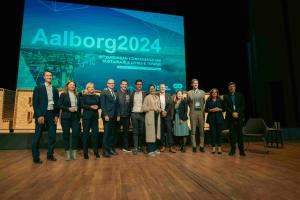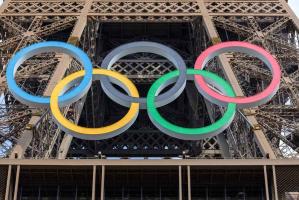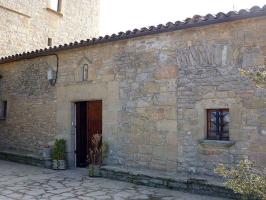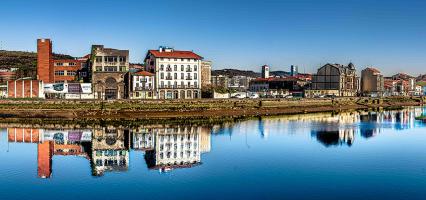Thessaloniki gets ready for its metro launch in November
The underground rapid transit lines have been under construction for almost two decades due to various project delays
 TheMayor.EU logo
TheMayor.EU logo An interview with the Mayor of Mieres, Spain
Aníbal José Vázquez Fernández (Ujo, Mieres, 1954) has been the Mayor of Mieres since June 2011, after running for the first time as a mayoral candidate in the municipal elections of 22 May of that year. His mandate has been renewed to the current administration after reaching an absolute majority in the 2015 and 2019 elections.
Throughout his life, he has been actively involved in various social movements in the unionist, cultural and recreational spheres, linked in most cases to the social and labour scene of Mieres.
It is the sixth-largest municipality in Asturias, with more than 37,000 inhabitants. We have been one of the most important mining localities in Spain, so we have a valuable industrial heritage that we want to transform so it could house new economic projects and promote cultural tourism.
In addition, we host the most modern campus of the University of Oviedo - a strategic geographical location in the connection of Asturias with the plateau. We are just 15 minutes away from the two most important cities in our autonomous region (Oviedo and Gijón).
And our challenges? Get more business investments to generate employment and diversify our economy, promote the Mieres 2030 Strategy, prepare the city to face demographic ageing, promote housing renovations to improve energy efficiency and improve quality of life. Also, turn to digitization and, above all, support research and development with the leading role of the University of Oviedo.
Today our economy pivots on the service sector, essentially the hotel industry, commerce, education and health. In the last decades, we lost thousands of industrial jobs, as a result of the closure of the mining sector, and that has left the local economy very affected. Currently, there are almost 700 companies and more than 6,300 people working, of which more than 1,700 are self-employed.
These figures confirm that we have an economy that is very vulnerable to the consequences of the pandemic, which is why we are mobilizing 1.6 million euros in aid. There are many small companies with enormous difficulties and our priority is to avoid the destruction of jobs.
We are developing our Sustainable Urban Development Strategy, with more than six million euros of investments. We are promoting the first measures to face the transformation that the municipality needs: generating new public spaces, such as Mayacina Park, with a budget of almost one million euros, or strengthening public transport and mobility.
As I was saying, facing ageing is another immediate challenge and it forces us to adapt our city to make it more accessible and habitable for the elderly, but at the same time, we also want to make it more attractive to young people. To achieve this, we need more equipment and better public services, or to continue betting on culture to inject dynamism.
Having said this, we have three other priorities. The first is expanding our Sustainable Development Strategy to carry out actions that allow the urban regeneration of different areas of the municipality that are currently deteriorated, and also improve energy efficiency and accessibility.
Secondly, we want to promote an economic project that links innovation, research and energy that will serve as an engine that will get us onto a new stage in our economy. And thirdly, we could take advantage of our past to generate a future because we have industrial and mining heritage that can become very important if we manage to involve other administrations and the HUNOSA mining company.
Our mining and industrial past can and must become an opportunity for the future. I will give you three examples: we have the oldest wooden castle in Spain, the Espinos shaft; the Santa Bárbara shaft, the first such declared an Object of Cultural Interest in Spain; and the Nicolasa shaft - the only one still in operation in Asturias.
We are working to articulate a tourism product that is as powerful as it is unique, but we cannot do it alone, we need the involvement of the rest of the administrations and the HUNOSA mining company.
The demographic crisis we are suffering has no short-term solution, we cannot generate false expectations. The challenge is to prepare our cities and towns for ageing, and that forces us to strengthen public services such as health, dependency care or social services. Extending life expectancy is a success and what we now have to do is guarantee the highest quality of life for a longer time.
At the same time, we have to find a way to prevent youth exodus. It has been a dramatic reality in Asturias for a long time, but to achieve this it is vital to create jobs and obtain business investments. Anything else would be just wishful thinking.
What we can do from our position, as a City Council, is to offer quality housing at an affordable price and be a place that offers a good and accessible quality of life.
If you want to keep up with how European cities and regions are changing, follow us on Facebook, Twitter and Instagram.

The underground rapid transit lines have been under construction for almost two decades due to various project delays

Now you can get your wine in Talence by paying directly in Bitcoin

That’s because the state has to spend money on updating the railway infrastructure rather than subsidizing the cost of the popular pass

Rethinking renewable energy sources for the urban landscape

The examples, compiled by Beyond Fossil Fuels, can inform and inspire communities and entrepreneurs that still feel trepidation at the prospect of energy transition

Now you can get your wine in Talence by paying directly in Bitcoin

The 10th European Conference on Sustainable Cities and Towns (ESCT) sets the stage for stronger cooperation between the EU, national and local level to fast track Europe's transition to climate neutrality.

At least, that’s the promise made by the mayor of Paris, Anne Hidalgo

The underground rapid transit lines have been under construction for almost two decades due to various project delays

At least, that’s the promise made by the mayor of Paris, Anne Hidalgo

Hostal de Pinós is located in the geographical centre of the autonomous region

Despite its church-y name, the district has long been known as the hangout spot for the artsy crowds

Urban dwellers across the EU are having a say in making their surroundings friendlier to people and the environment.

Forests in the EU can help green the European construction industry and bolster a continent-wide push for architectural improvements.

Apply by 10 November and do your part for the transformation of European public spaces

An interview with the Mayor of a Polish city that seeks to reinvent itself

An interview with the newly elected ICLEI President and Mayor of Malmö

A conversation with the Mayor of Lisbon about the spirit and dimensions of innovation present in the Portuguese capital














